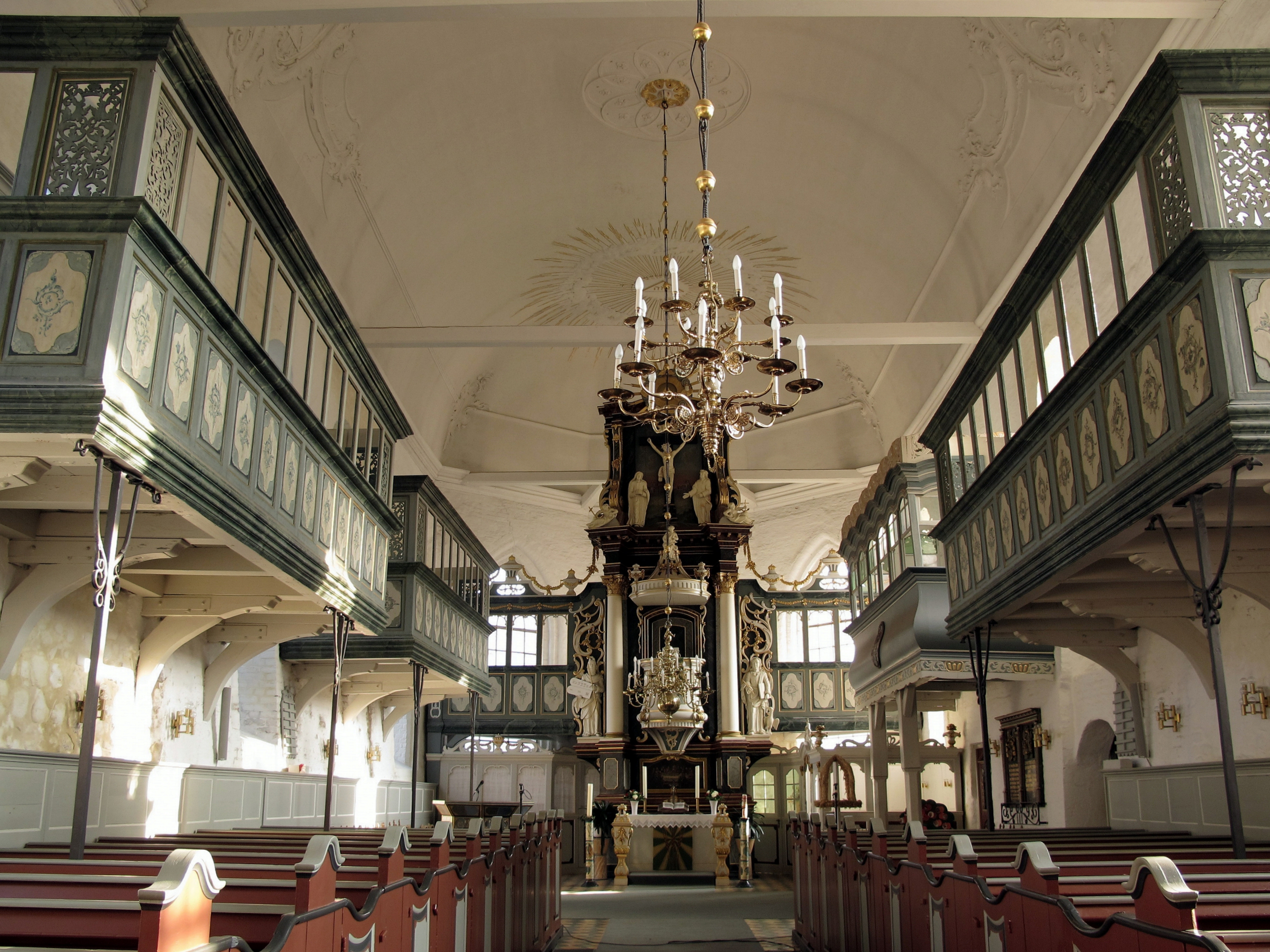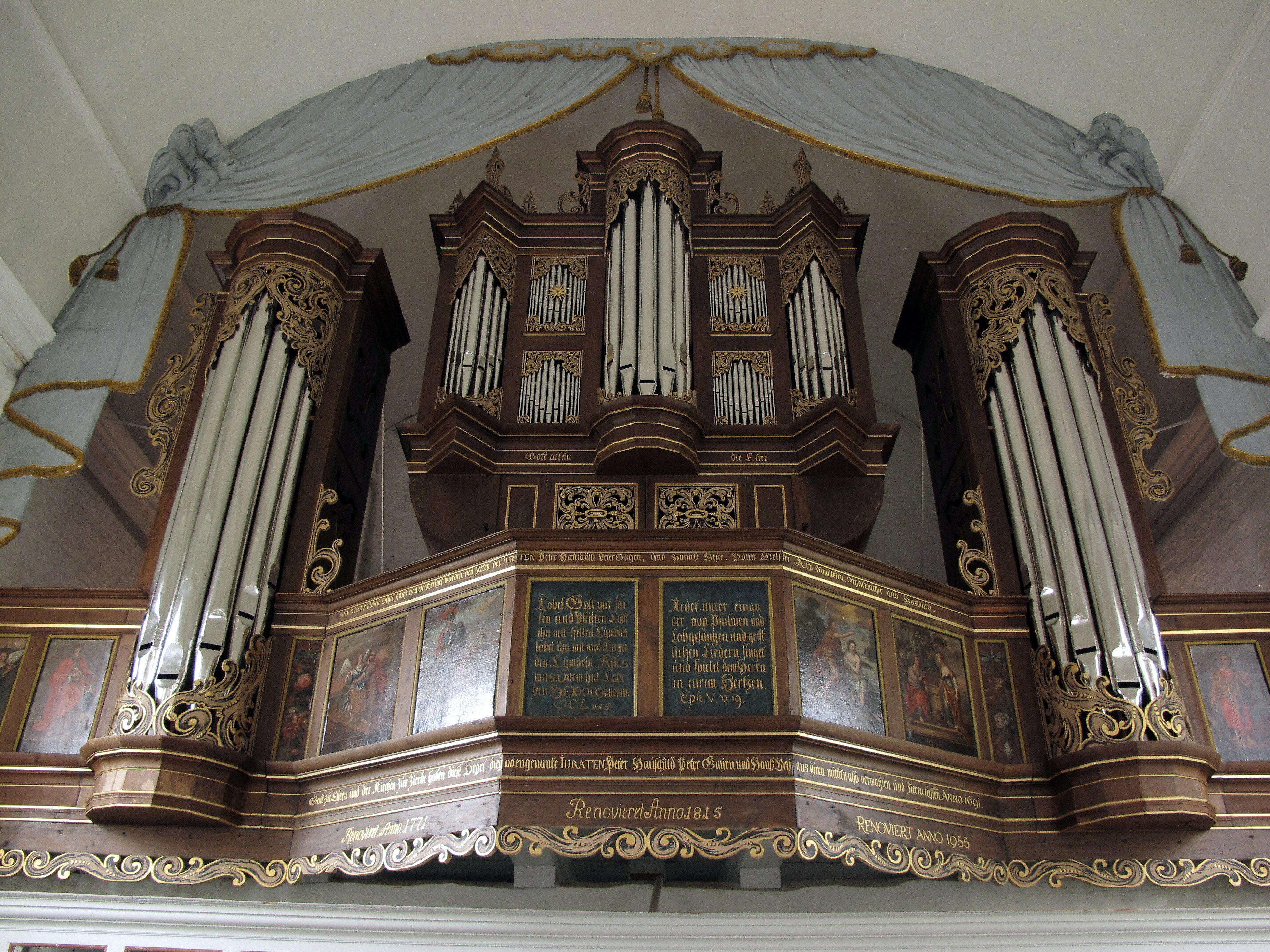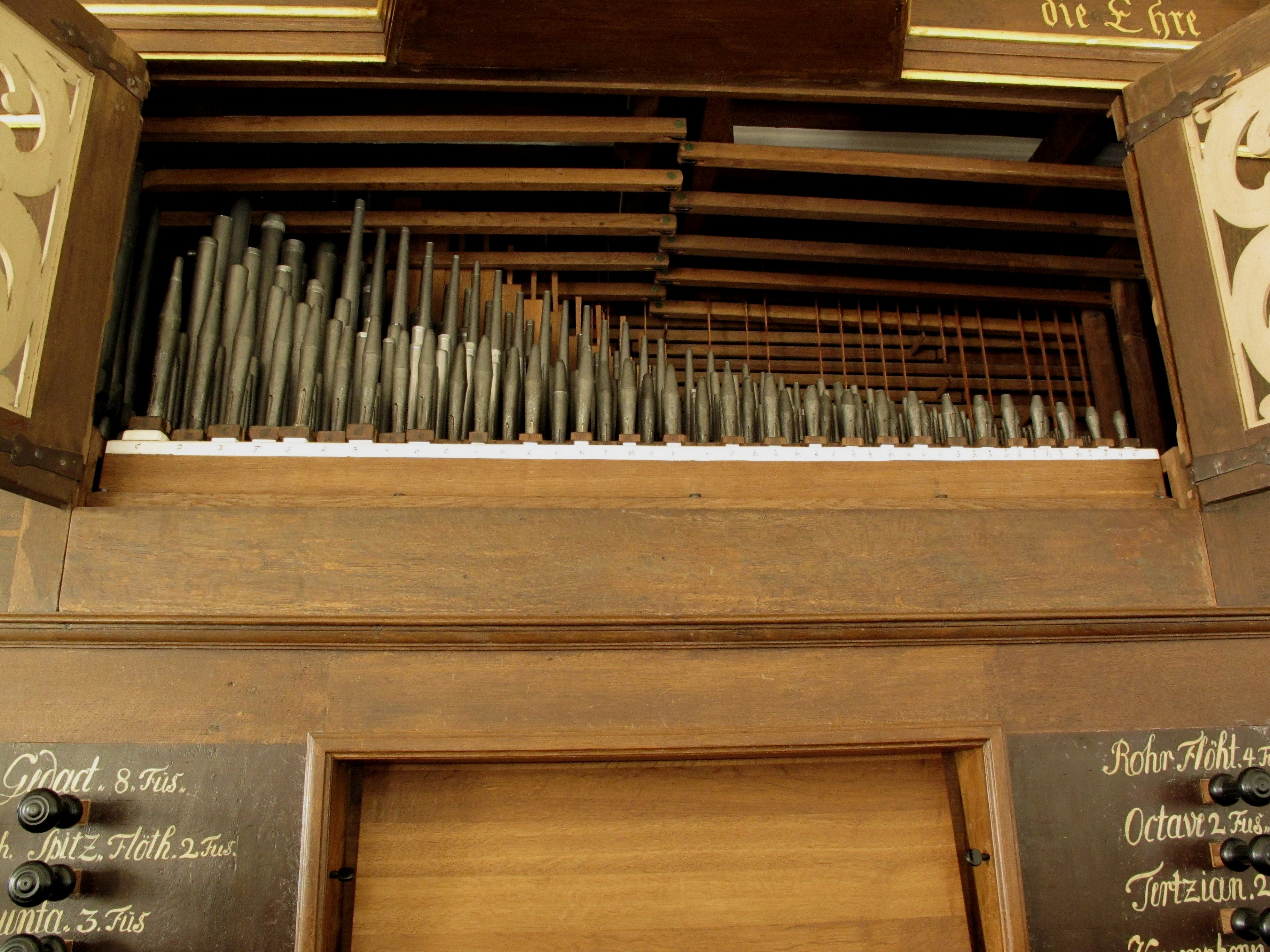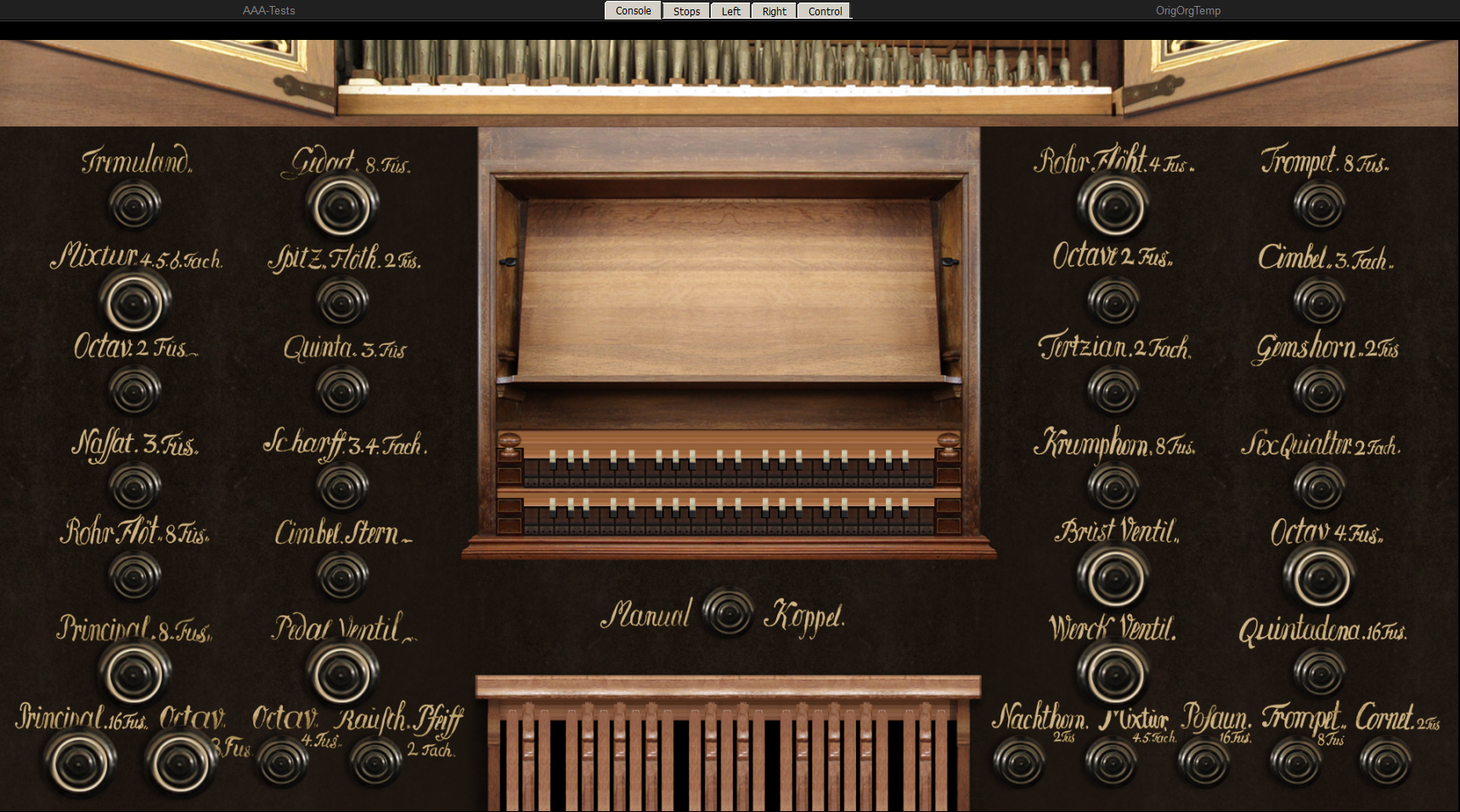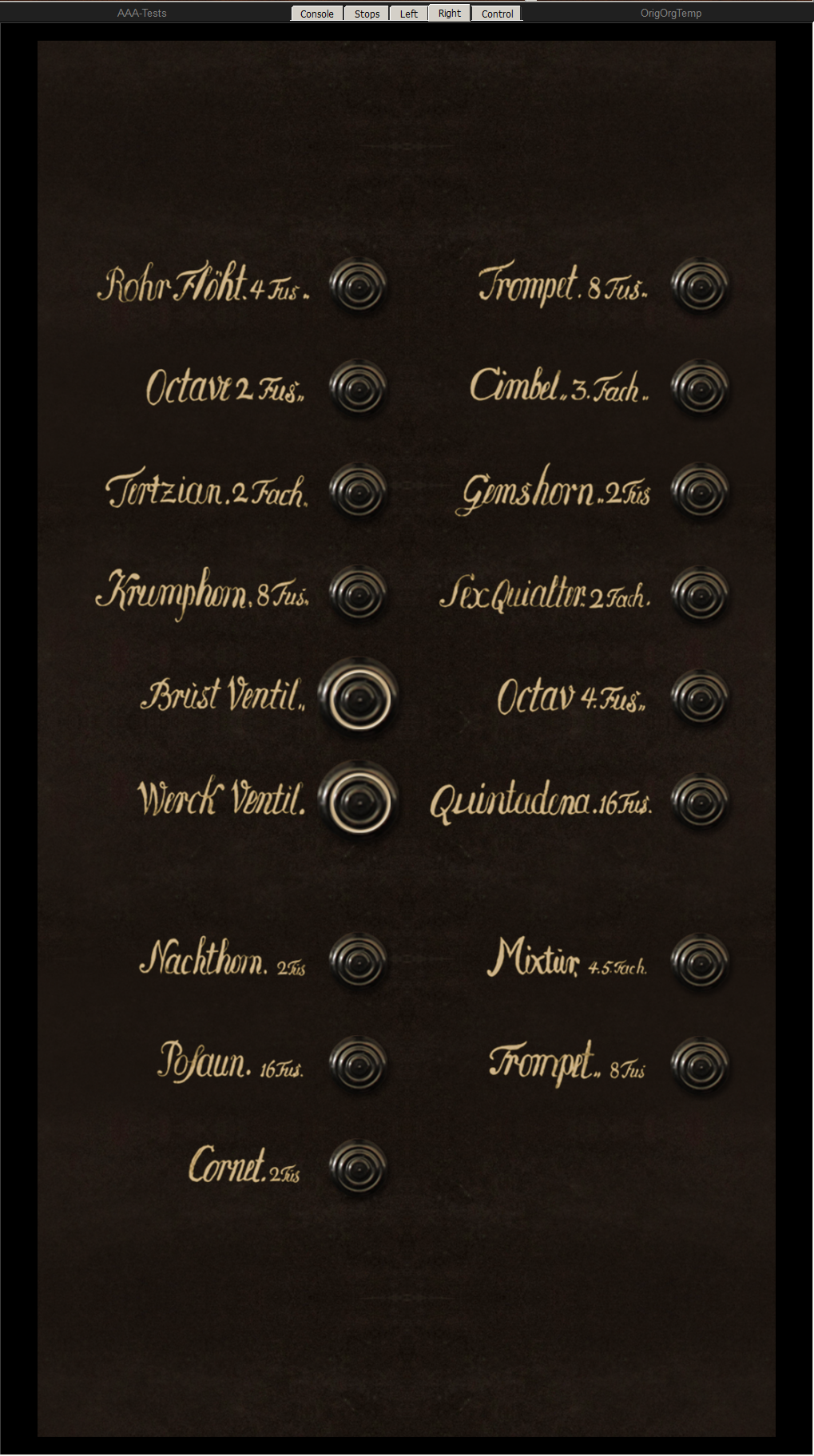1687 Arp Schnitger Organ
Ev.-Luth. Parish of St. Nicolai et St. Martini, Steinkirchen / Germany
Short Introduction and History
In 1685 Arp Schnitger was commissioned to build a new organ on the west gallery.
Schnitger realised an instrument with a Hauptwerk, a Brustwerk and a Pedal division in two independent cases totalling 28 stops, of which six incorporated pipework from the 16th century. The organ was completed in 1687.
The various individual stops have great tonal beauty and polyphonic quality while the Principals, flutes and reeds blend together incredibly well offering a stunning sonority, even with a limited number of stops. The instrument has an extraordinary high number of original pipes with original voicing.
During the restoration it was decided to tune the organ to a mild non-equal temperament as probably already applied by Georg Wilhelm Wilhelmy in 1775.
The instrument was already well-known in the 1950s by LP recordings and was repaired by organ builder von Beckerath at that time with great respect. Schnitger Steinkirchen was the starting point of a reawakened interest in historic organs and their restoration.
Since the restoration in 2012 by Rowan West, the instrument is considered to be one of the most authentic Schnitger organs in existence and still in its original position.
The church has a reverberation time of about 2.5 seconds
See Location in Googlemaps
Sample Set Technical Details
The organ was recorded in Oct./Nov. 2012 with 48 kHz, 24 bit, multi-channel for Hauptwerk 4, using the multi-release technique introduced by OrganArt.
All stops were recorded with multiple release levels for short, medium and long key attacks for optimal acoustical mapping and native tremulant sounds (no simulation!)
The set supports 4-Channel Surround and/or Variable Audio Perspective (VAP).
All Brustwerk ranks were recorded twice for opened and closed doors to achieve authentic sounds for both situations (no simulation!)
Thanks
Virtual Console
Specification
Hauptwerk
|
Pedal (C,D,E–d1)*01. Principal 16 S |
Registration AidsManual shove coupler BW-HW Tremulant for the entire organ Additional Facilities
Cimbel.Stern |
| +: before Hoyer (about 1520) H: Dirck Hoyer (1581) S: Arp Schnitger (1687) ++: Workshop Schnitger (after 1687) W: Georg Wilhelmy (1775) B: Rudolf von Beckerath (1987/1991) RW: Rowan West (2012) * Switchable compass extension: Manuals C–d3, Pedal C–f1 |
Pitch and Temperament
~ 3/4 whole tone above normal (a1 = 483 Hz 16°C),
Modified Werckmeister III
Blower System
6 wedge bellows
3 cut-out ventils (Pedalventil, Werckventil, Brustventil)
Wind pressure: 72 mm
Requirements
Loaded Version
Memory Requirements 3) |
Processor Speed |
|
|
16-bit, compressed1), 2-channel |
3,0 GByte | ≥ 2 GHz DualCore 2) |
|
16-bit, compressed, 4-channel |
6,0 GByte | ≥ 2 GHz DualCore |
|
20-bit, compressed, 2-channel |
4,6 GByte |
≥ 2 GHz DualCore 2) |
|
20-bit, compressed, 4-channel |
9,1 GByte |
≥ 2 GHz DualCore 2) |
1) Lossless compression (no loss of sound quality!)
2) Recommended:
Minimal configuration: Dual-Core, 4 GByte main memory
Optimal configuration: Quad-Core, 16 GByte RAM
3) To load this organ into Hauptwerk you will need enough free memory in your computer, due to the amount of playable stops, not including the operating system or any other programs that may be running!
We recommend a professional audio card (e.g. RME-Series) and a studio headphone (e.g. AKG Reference Headphone K701, K712) for optimal sound and room impression.
Demos
The following demo pieces were recorded with the Hauptwerk Advanced Edition V4.1 software and the virtual organ sample set, with no additional effects processing.
Live-Recordings Aarnoud de Groen, Niederlande:
J.S. Bach: Partita "Sei gegrüßet, Jesu gütig", BWV 768 | 20:25 min |Registrations
Buxtehude: Praeludium in e, BuxWV 142 | 08:48 min | Registrations
Numerous other live recordings can be found on the ConcertHall Website
(Advanced Search, Organ: OAM - Arp Schnitger)
© OrganArt Media, all rights reserved
No demo sounds may be used or transmitted in any form for public purposes without the prior written permission of the publisher!
Informations, Discography and Weblinks
Discography
Orgelschätze im Alten Land- Die Arp Schnitger-Orgel der Kirche St. Nicolai et St. Martini
Martin Böcker, ambitus 96 968, 2013
Arp Schnitger in Niedersachsen (CD I/ Steinkirchen)
Arp Schnitger-Gesellschaft, Brake, 2002
J. S. Bach - Orgelbüchlein
Alexander Fiseisky, Lammas Records LAMM 099D, 1997 (before restoration)
Denkmäler barocker Orgelbaukunst- Die Arp Schnitger-Orgel in St. Nicolai und St. Martini
Eberhard Lauer, ambitus 97 900, 1994 (before restoration)
Organists of the 1950 - EMI recordings of Schnitger's Organ in St. Nicolai & St. Martini
Geraint Jones, AMPHION PHI CD 202, 1950-52 (digitally restored from the master tapes 2004)




